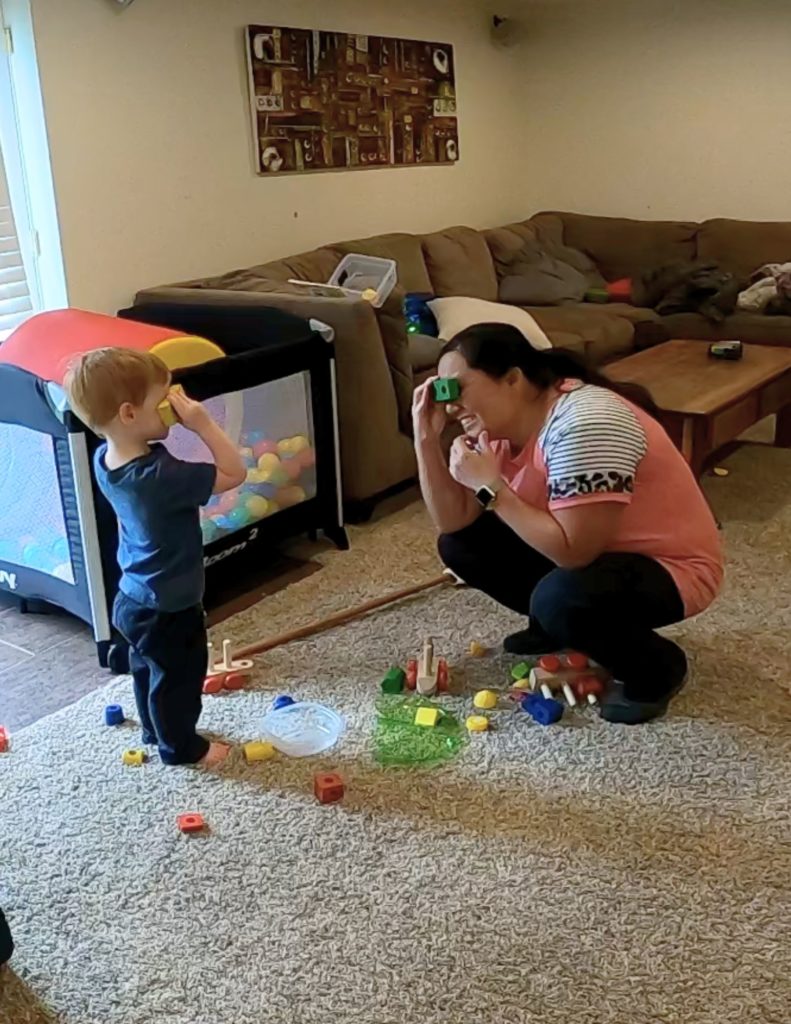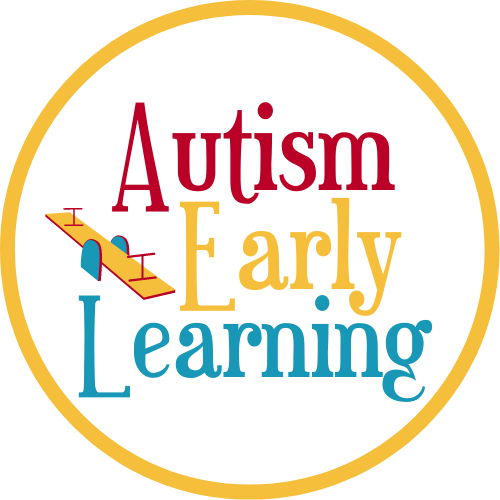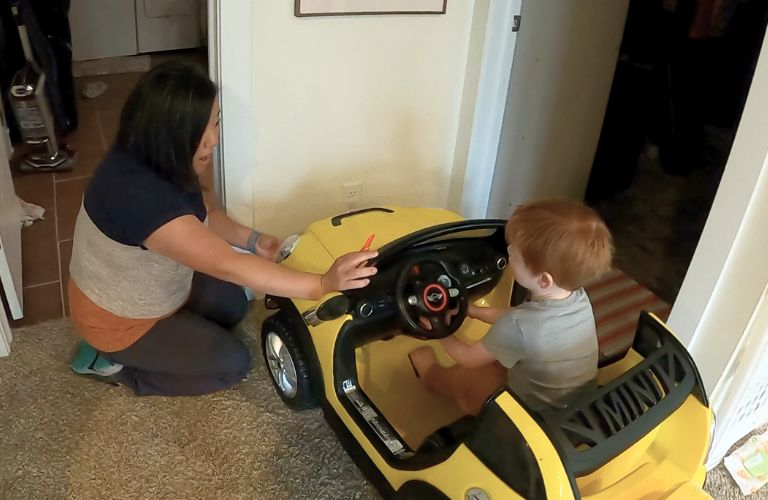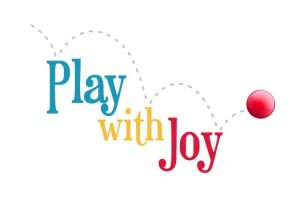Receptive language is a crucial aspect of a child’s communication development whether or not the child is autistic. It involves the ability to understand and comprehend spoken language, which forms the foundation for effective communication and learning.
As adults, I think that it comes natural to us to give commands and ask questions a lot. When we’re interacting with or even playing with a young child, we like to say things like:
- Put this in the box
- Show me the square
- Point to the cat
- Touch your nose
- Find the ball
- Give me the car
- Get your shoes
- Where’s mommy?
- Which one is happy?
- Who’s wearing red?
Your role in nurturing receptive language skills is vital, but it doesn’t always have to involve issuing commands or asking questions. Commands and questions aren’t a bad thing, but you don’t want all of your interactions to be a quiz. In this blog post, we will explore some alternative and effective ways to help a child improve their receptive language without relying on commands or questions.
Narrate
Rather than asking questions or giving commands, try narrating. Sometimes you may hear this called being a sportscaster. You’re just saying what’s happening or what you see, but you’re not telling the players what to do.
When you’re narrating, you can narrate what you see, what you hear, or what you feel. You can narrate what you’re doing, what your child is doing, or what someone else is doing. You can narrate what’s happening in a book, or on a TV show. You can narrate all the time.
Narrating what’s happening can be a great way to help a child process what they’re seeing. It can also help you connect with a child when you’re having a hard time engaging with them. This is one of my go to techniques when nothing else seems to be working.
Click on the boxes below to find out what you could say instead of the question or command.
Point to the square
The square is so little
Touch the cat
The cat is so soft
Where's your toes?
I'm going to tickle your toes!
Make your car jump
Your car jumps so high! I am going to make my car jump too
This approach exposes your child to a rich vocabulary and helps them make connections between words and actions, indirectly improving their understanding of language.
Key Words
Another thing you can do to help a child improve receptive language skills is label things using the main keyword. In the Play Project, we call this Salient Language. Basically what you’re going to do is either only use the keyword or emphasize the keyword within the sentence.
By doing this, your child will hear the word used many times, and they will also know that it is the important word. If you’re narrating, then just emphasize certain words while you’re narrating. If you’re asking a question, then emphasize the keyword.
Here are some examples:
- Your child is playing with blocks. When your child puts a block on the top of his tower, you can say “BLOCK on top” or “You’re putting another BLOCK on” or “the BLOCKS are getting so tall”
- You’re playing with colored beanbags. Every time your child goes to throw one of them, label the color. You could say the color when she picks it up and then say it even louder when she throws it. “green” “GREEN!”
- Your child reaches up for you to hold him. You can say “up?” and then when your child moves forward you pick up your child and say “UP!”
Music and Rhymes
Music and rhymes are not only fun but also incredibly effective in enhancing language skills. Sing songs together, recite nursery rhymes, and introduce your child to music with clear and catchy lyrics. This exposure to rhythmic patterns and words fosters language development without imposing commands.
Songs that have repetitive phrases are great because they’re predictable and kids can join in easily. Also songs that have actions are great because kids start to connect the actions to the words. If you need some fun songs to try out, check out my post with some of my favorite songs.
Follow Your Child's Lead
Children often display their interests through play and activities. Pay attention to their preferences and engage in activities related to those interests. By participating in their world, you create opportunities for meaningful language interactions that arise naturally without commanding their attention.
If your child loves playing with cars, then play cars and use lots of language while you play. Model different words that have to do with cars. If it’s something that your child loves, then they will be more engaged and ready to learn.
If your child loves balls, then use words like: round, fast, slow, high, big, small, bouncy, roll, spin, etc. Find ways to bring in different vocabulary as you play and narrate as you go.
Helping a child improve their receptive language doesn’t always involve giving commands. By engaging in play, narrating, using salient language or keywords, using music and rhymes, and following your child’s lead, you can create a language-rich environment that nurtures their language skills naturally. Remember to be patient and supportive, allowing your child to develop at their own pace. By adopting these alternative approaches, you will empower your child to become effective communicators, opening doors to a lifetime of learning and success.
5 Things You Can Do When You Can't Get Your Child To Engage In Play
Enter your name and e-mail to receive your 5 Tips To Improve Engagement along with more strategies and techniques to help you increase learning and growth.





